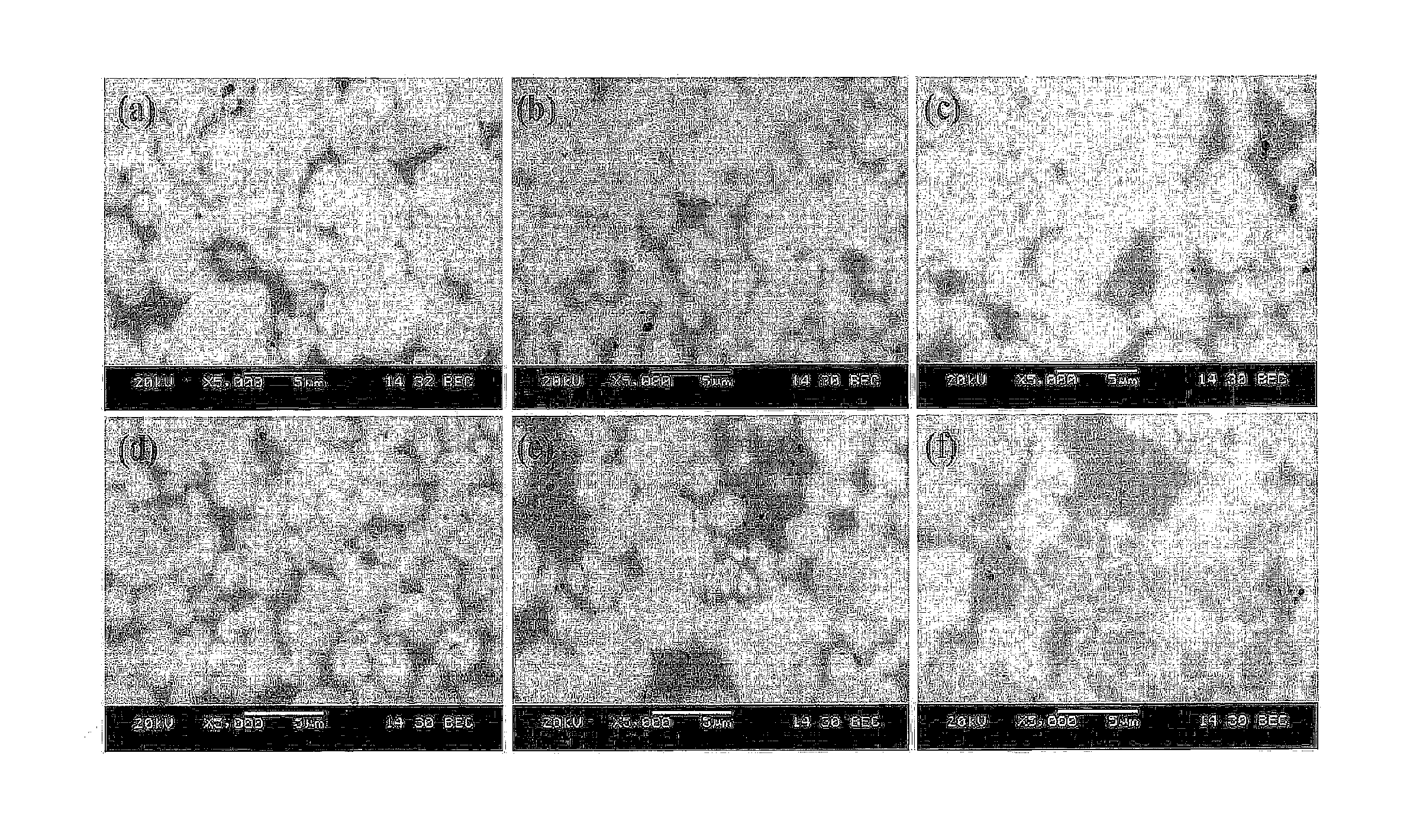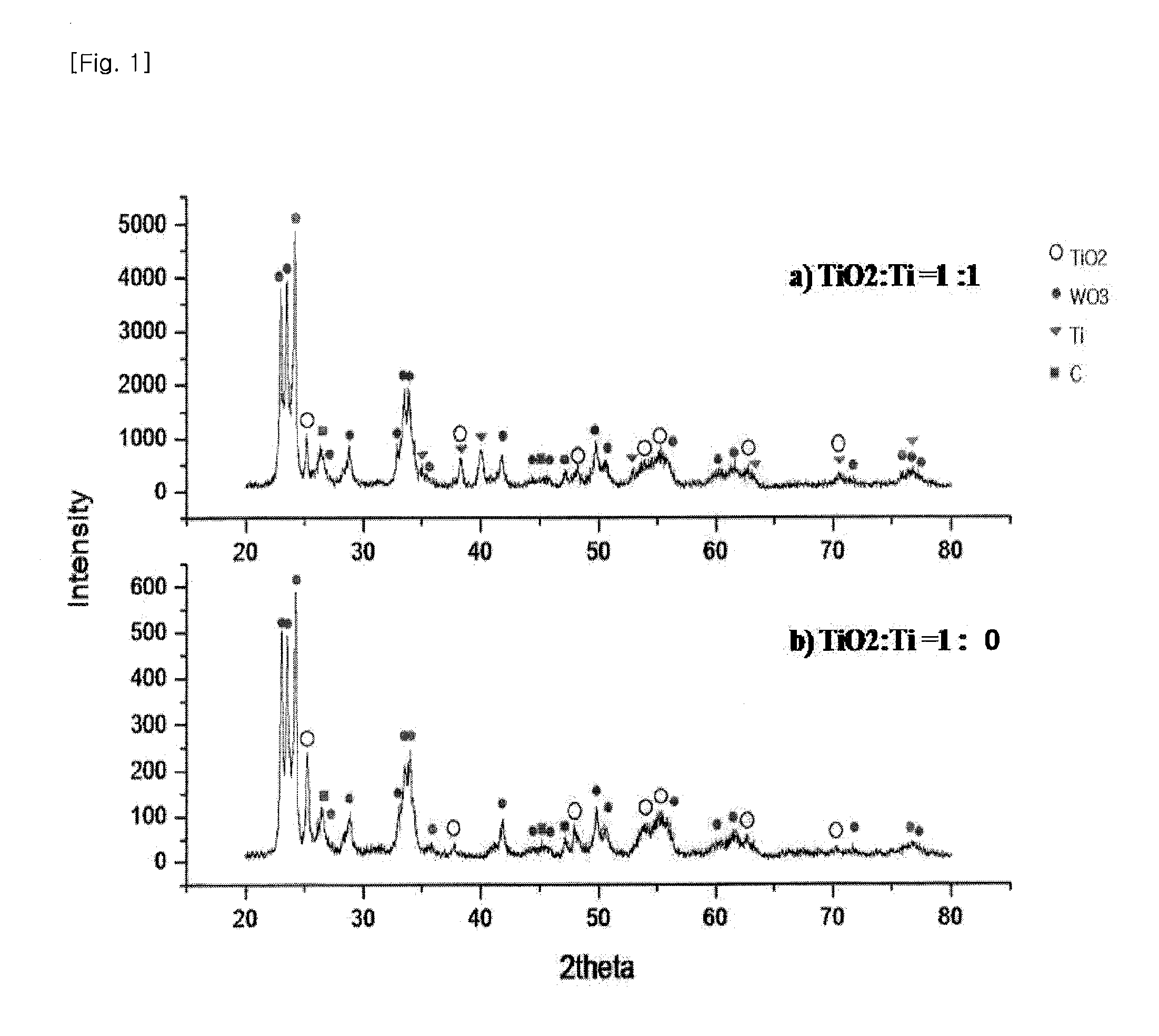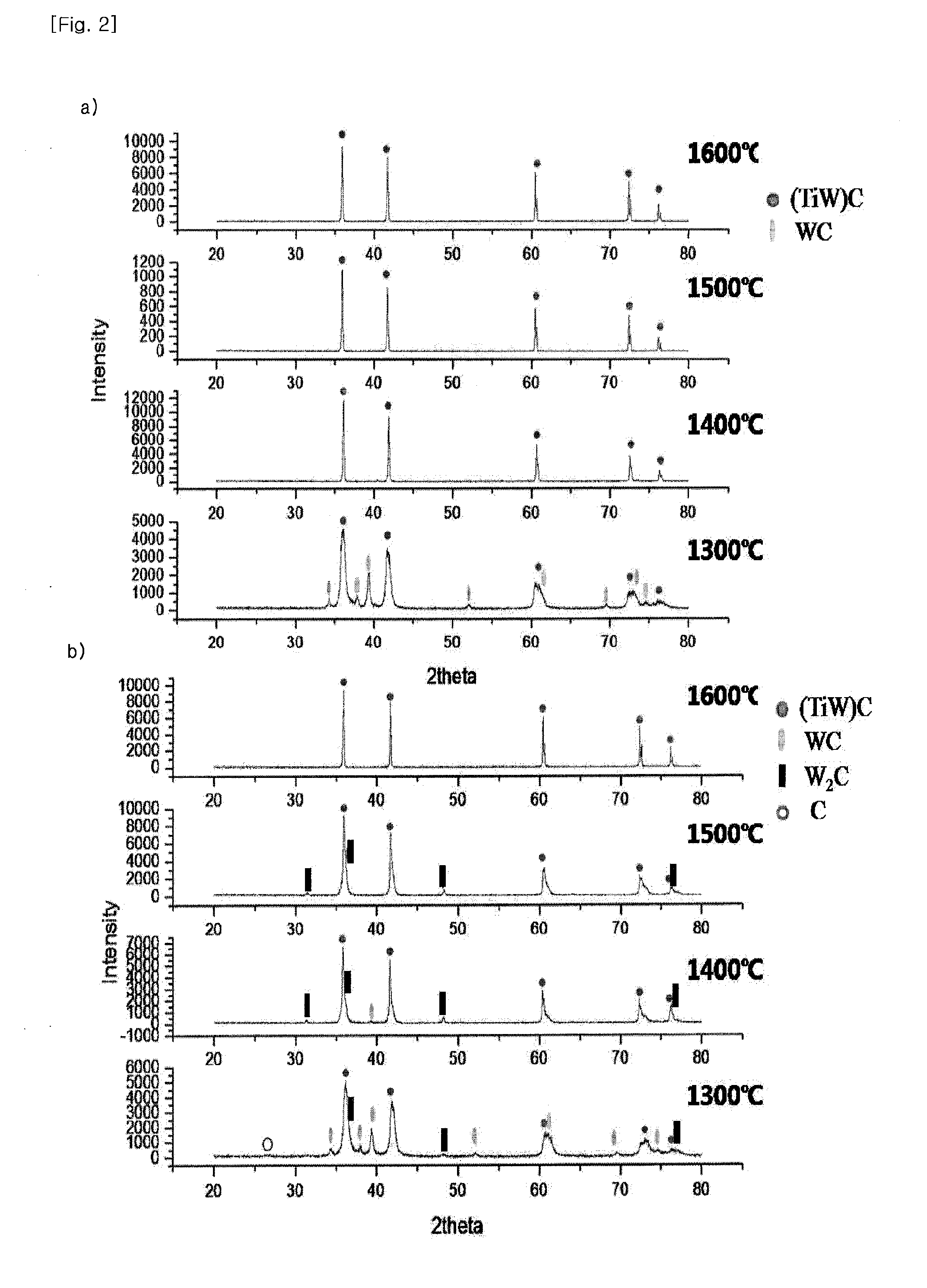Solid-solution carbide/carbonitride powder and method for preparing thereof under high temperature
a technology of carbide/carbonitride and solid-solution carbide, which is applied in the direction of oxy/sulfo carbides, nitrogen-metal/silicon/boron binary compounds, inorganic chemistry, etc., can solve the problems of low toughness of conventional art, failure to obtain significant, and reducing toughness of sintered bodies
- Summary
- Abstract
- Description
- Claims
- Application Information
AI Technical Summary
Benefits of technology
Problems solved by technology
Method used
Image
Examples
example 2
[0108]In order to produce a complete solid solution with the composition of (Ti0.7W0.3)(CN), Ti metal, anatase TiO2, WO3 and carbon powder were prepared. Two mixtures in which the mixture ratios of TiO2 and Ti were 1:0 or 1:1, respectively, were prepared, and WO3 and carbon powder were mixed therewith. The thus prepared two mixtures were ground in an attrition mill, using WC—Co balls, at 250 rpm and with BPR (ball-to-powder ratio) of 30:1, in a dry state for 20 hours. Then, the ground powders were reduced and carbonitrided by heat-treatment at 1,300° C. to 1,500° C. for 2 hours, and at 1,600° C. for 1 hour under vacuum. The amount of carbon used was the same as in Example 1, and the weights of raw materials used in Example 2 for preparing (Ti0.7W0.3)(CN) are the same as in Table 1.
[0109]FIG. 3 illustrates XRD results of the powders prepared by reducing and carbonitriding the powders of FIG. 1(a) and FIG. 1(b) in a graphite vacuum furnace at a temperature range of 1,300° C. to 1,500°...
example 3
[0114]In order to produce a complete solid solution with the composition of (Ti0.7W0.3)(CN), anatase TiO2, WO3 and carbon powder were prepared and mixed. The thus prepared mixture was ground in an attrition mill, using WC—Co balls, at 250 rpm and with BPR (ball-to-powder ratio) of 30:1, in a dry state for 20 hours. Then, the ground powders were reduced and carbonitrided by heat-treatment at 1,800° C. and 2,000° C. for 1 hour at a nitrogen pressure of 10 torr. The amount of carbon used was the same as in Example 1, and the weights of raw materials used in Example 3 for preparing (Ti0.7W0.3)(CN) are the same as in Table 1.
[0115]FIG. 4 illustrates XRD results of the (Ti0.7W0.3)(CN) solid solution powders prepared by reducing and carbonitriding the powders of FIG. 1(a) and FIG. 1(b) in a graphite vacuum furnace at a nitrogen pressure of 10 torr at 1,800° C. and 2,000° C. for 1 hour, and shows that the (Ti0.7W0.3)(CN) complete solid solutions were formed at 1,800° C. and 2,000° C. Howeve...
example 4
[0118]In order to produce a complete solid solution with the composition of (Ti0.7W0.3)C-20 wt % Ni, TiO2, WO3 and carbon powder were mixed and then ground in an attrition mill, using WC—Co balls, at 250 rpm and with BPR (ball-to-powder ratio) of 30:1, in a dry state for 20 hours. Then, the ground powders were reduced and carburized by heat-treatment at 1,300° C. to 1,500° C. for 2 hours, and at 1,600° C. for 1 hour at a nitrogen pressure of 10 torr to produce (Ti0.7W0.3)C solid solution powders. The weights of raw materials used are the same as in Table 1. The solid solution powders were mixed with micrometer-sized Ni powders in a planetary mill in a wet state for 24 hours, and then dried. The dry powders were sintered in a graphite vacuum furnace at 1,510° C. for 1 hour to produce a sintered body.
[0119]FIG. 5 illustrates optical microscopic and FESEM (field emission scanning microscopy) images of the microstructures of the (Ti0.7W0.3)C-20 wt % Ni cermet sintered bodies which were ...
PUM
| Property | Measurement | Unit |
|---|---|---|
| melting point | aaaaa | aaaaa |
| melting point | aaaaa | aaaaa |
| temperature | aaaaa | aaaaa |
Abstract
Description
Claims
Application Information
 Login to View More
Login to View More - R&D
- Intellectual Property
- Life Sciences
- Materials
- Tech Scout
- Unparalleled Data Quality
- Higher Quality Content
- 60% Fewer Hallucinations
Browse by: Latest US Patents, China's latest patents, Technical Efficacy Thesaurus, Application Domain, Technology Topic, Popular Technical Reports.
© 2025 PatSnap. All rights reserved.Legal|Privacy policy|Modern Slavery Act Transparency Statement|Sitemap|About US| Contact US: help@patsnap.com



